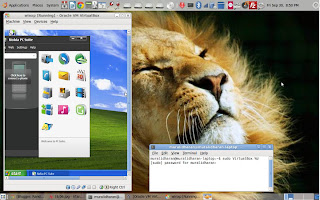The narrator of the story, young Vijay is a budding journalist who , due to sheer boredom of life in a small town in South India, breaks out his cocoon to take up a job with a magazine in Mumbai. Mr Sorabji's magazine, "The Secularist", has a small but dedicated readership of people who share his vision of a secular India.
Mr Sorabji becomes a father figure for Vijay and he just soaks up the ideas and vision expounded by his mentor. But for Vijay, it is all just abstarct ideas till the time communal violence breaks out in mumbai, following the demolition of Babri masjid. He gets caught up in the violence on the streets and is a mute witness to riots and killings in all the gory details. His magazine runs a major story on the riots and riot victims as part of the campaign for a secular India.
The second part of the book covers Vijay's experience at the Nilgiris where another disputed Shrine is under attack by the right wing activists. It is here that Sorabji's manuscript is introduced, from which the title of the book is derived. The artcle is addressed to the young people of the country for instilling of secular values through a study of the lives of Asoka, the emperor of renunciation, Akbar, the emperor of faith and Gandhi, the emperor of truth.
There are two imposing , well defined characters to cover the two main divergent view points, viz, Mr Sorabji, the editor of 'The secularist' and Rajan, the entrepreneur-politician. While Mr Sorabji, believes in convergence of religions for the good of the mankind, Rajan convincingly argues that a strong Hindu rashtra alone can bring in peace and prosperity for all including the minorities.
The most lovable character in the novel, is the vagabond called Noah, who has seen it all, done it all , in his 'ripe' age of 36 and is now content to live in the local cemetry with his dope, flowers, a dog called' godless' and his great collection of contemporary european poetry. While all other characters move on predictable lines, it is this loose canon that adds life to the narration in the second part of the book.
The first part of the novel covering Vijay's escapades in mumbai is highlighted by a gripping narration with a meticulous eye for details. In the second part, the narration is more like a tourist guide book, with long interruptions by sermons in history, ie Sorabji's manuscript on the 'emperors'. Yet there is enough momentum to keep the readers' interest in the ultimate fate of the shrine. Will it also go the Babri Masjid way and if so with what consequences ?
An immensely readable book, if only for the excellent characterization of Mr Sorabji and Noah.























